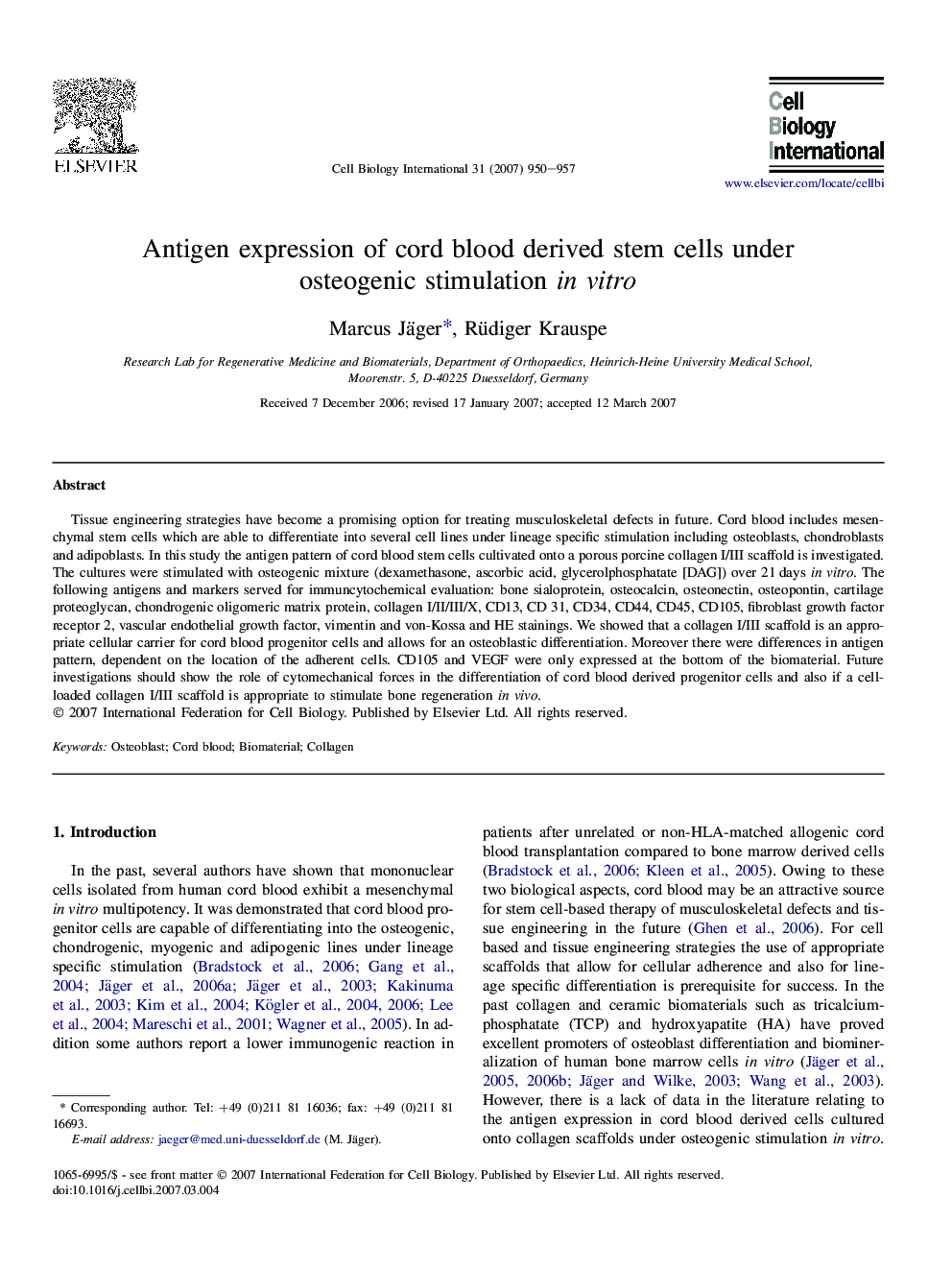| Article ID | Journal | Published Year | Pages | File Type |
|---|---|---|---|---|
| 2067693 | Cell Biology International | 2007 | 8 Pages |
Abstract
Tissue engineering strategies have become a promising option for treating musculoskeletal defects in future. Cord blood includes mesenchymal stem cells which are able to differentiate into several cell lines under lineage specific stimulation including osteoblasts, chondroblasts and adipoblasts. In this study the antigen pattern of cord blood stem cells cultivated onto a porous porcine collagen I/III scaffold is investigated. The cultures were stimulated with osteogenic mixture (dexamethasone, ascorbic acid, glycerolphosphatate [DAG]) over 21Â days in vitro. The following antigens and markers served for immuncytochemical evaluation: bone sialoprotein, osteocalcin, osteonectin, osteopontin, cartilage proteoglycan, chondrogenic oligomeric matrix protein, collagen I/II/III/X, CD13, CD 31, CD34, CD44, CD45, CD105, fibroblast growth factor receptor 2, vascular endothelial growth factor, vimentin and von-Kossa and HE stainings. We showed that a collagen I/III scaffold is an appropriate cellular carrier for cord blood progenitor cells and allows for an osteoblastic differentiation. Moreover there were differences in antigen pattern, dependent on the location of the adherent cells. CD105 and VEGF were only expressed at the bottom of the biomaterial. Future investigations should show the role of cytomechanical forces in the differentiation of cord blood derived progenitor cells and also if a cell-loaded collagen I/III scaffold is appropriate to stimulate bone regeneration in vivo.
Related Topics
Life Sciences
Biochemistry, Genetics and Molecular Biology
Biophysics
Authors
Marcus Jäger, Rüdiger Krauspe,
